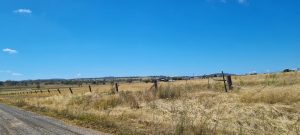Knowledge is power, and never more so than in the context of purchasing a property. For the purposes of this blog article we’ll focus on residential property. Most people hit open houses with an idea of what they are looking to buy. Their top priorities might be 4 bedrooms, a pool, or perhaps a nice yard with room for a shed.
Once you find the home that ticks your boxes, at the price you want to pay, you may think it’s time to make an offer. Whilst you can make offers subject to conditions, it pays to do a little extra research to make sure there are no hidden surprises.
Planning, zoning and overlays can have a major impact on what you can, or cannot, do with a property. Therefore you want to be sure that whatever applies to your property is workable for your plans today, and down the track. A little research into building or planning approvals can help you avoid: spending money to bring the property up to code; issues with insurance; and impacts to property value or resale potential. Of course, rules and regulations do change over time and you can’t future proof against that, but you can check what currently applies to the property.
First things first, you need to look into the property’s zoning. A town planner can do this for you. Zones basically help Councils organise the area they govern. They use zones to outline the acceptable, or “preferred”, land uses. Zones are mapped out and have different levels of assessment. The criteria and intent for a particular zone is laid out in its Zone code.
As an example, in the Brisbane City Council local government area, the residential property zone codes are:
- Low density residential – 1 to 2 storey houses
- Low-medium density residential – 1 to 2 storey houses plus a mix of low rise 2 to 3 storey apartments, townhouses etc.
- Medium density residential – 1 to 2 storey houses plus a mix of medium rise up to 5 storey apartments, townhouses etc.
- High density residential – 1 to 2 storey houses plus a mix of medium rise up to 15 storey apartments, townhouses etc.
- Character residential – 1 to 2 storey houses (e.g. Queenslanders and Workers’ Cottages) in a character precinct
- Tourist accommodation – short term accommodation near attractions.
The zone your property is within can affect your future plans. For example, if you plan to develop your double block into 3 storey townhouses this may not be approved if your property is in the low density residential zone. A town planner can help you understand what zone code applies to your property, and what future development may be possible.
In addition to zone codes, neighbourhood (or local) plans can also restrict what is possible to develop or change at your property. This layer of planning allows for a more granular response to planning that reflects the neighbourhood context.
Overlays are also important to be aware of when considering a property. Essentially overlays identify areas that have sensitivities, constraints on land use, valuable resources or special development opportunities.
So why should you care about zones, plans and overlays? Because they can impact what approvals may be required for a residential project. A straightforward renovation can become a costly exercise in preservation if you purchase a property covered by a character overlay. If your plans need to be approved by Council via a Development Application (DA) there will be fees to pay for this process to be executed. Not only does Council charge you to consider a DA, but you are likely to need consultants, like town planners, to assist with its preparation.
Buyers should also be wary of claims that a property has existing planning approvals. Conduct a fact check and verify this for yourself. There would be nothing worse than believing you can develop a site with an existing DA, only to find this to be untrue or not as described. Planning and Development (PD) Online is a tool offered by most major councils that you can use to check the property. Alternatively, you can ring the Council.
The checks shouldn’t stop once you’ve discovered the applicable planning codes. You would also be wise to check if the property floods. Some councils offer a free flood report you can obtain from their website. The integrity of the building should also be reviewed as part of your process. These reports can uncover latent issues like rot or termite infestations.
Dial Before You Dig is also another valuable check you can execute and it’s free. Search online to ascertain what services, if any, are running under your property. For example, if you had a sewer under your property and you wanted to do an extension, you may have to submit an application to build over it. Access Dial Before You Dig here or by ringing 1100.
Another worthwhile check could be the property’s sale history. For a small fee, you can access this via the applicable Government office. Some apps, like Domain, also offer price guides for houses and sales history as does On The House. Data from the likes of the Real Estate Institute of Queensland (REIQ) on median suburb values can also be of use.
Consult Planning can quickly and easily help you perform a number of checks on a property you are considering. Get in touch to save yourself time and money via office@consultplanning.com.au or 1300 017 540.
Local Government interactive map links:
- Brisbane City Council
- Moreton Bay Regional Council
- Logan City Council
- Redland City Council
- Gold Coast City Council
- City of Ipswich
Disclaimer: While every effort has been made to provide accurate information, Consult Planning does not guarantee that this blog article is free from errors or omissions or is suitable for your intended use.








